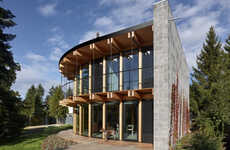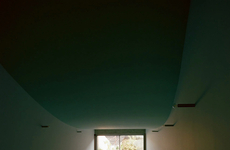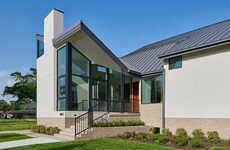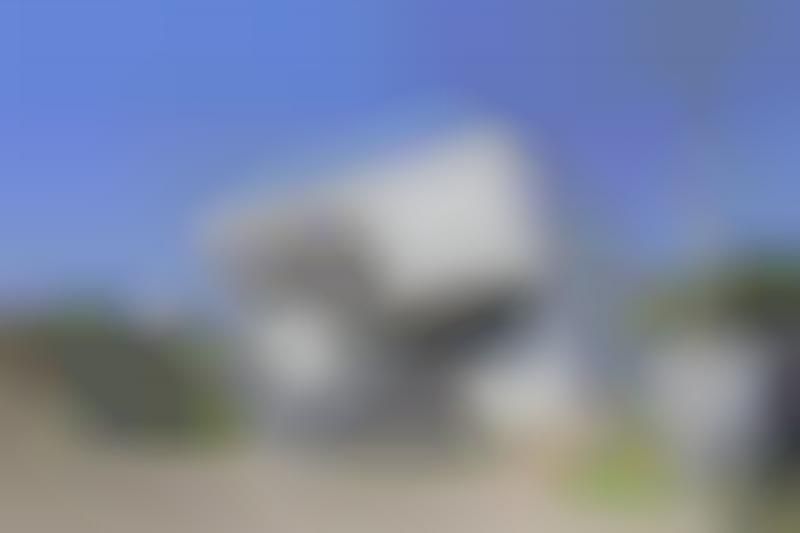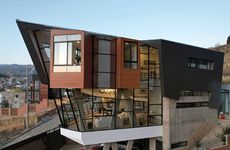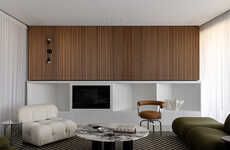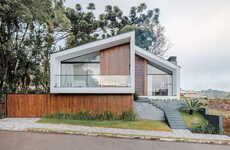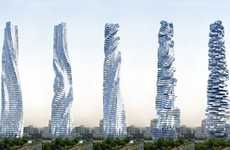
'Aresta House' Features a Topsy Turvy Structuration
Joey Haar — May 25, 2017 — Art & Design
References: archdaily
By any measure, modern building techniques offer architects far more creative freedom than they could have been afforded in the past, and that's clear when looking at Aresta House. The family home has an inverted shape that makes it look as though it's a wedge driven into the earth, and its walls extend outward at seemingly impossible angles.
Though Aresta House has a striking design, the shape was chosen for a very pragmatic reason. The house is on the outskirts of Brasilia, and the suburban area experiences extreme heat because of thermal amplitudes that emerge in the afternoons. With its inverted shape, Aresta House keeps direct sunlight out during the warmest hours of the day, thus keeping the home cooler through its very design.
Though Aresta House has a striking design, the shape was chosen for a very pragmatic reason. The house is on the outskirts of Brasilia, and the suburban area experiences extreme heat because of thermal amplitudes that emerge in the afternoons. With its inverted shape, Aresta House keeps direct sunlight out during the warmest hours of the day, thus keeping the home cooler through its very design.
Trend Themes
1. Inverted-shaped Architecture - The trend of designing buildings with inverted shapes offers practical solutions for addressing extreme weather conditions.
2. Creative Structural Design - Architects are utilizing modern building techniques to push the boundaries of structural design, resulting in visually striking and unconventional buildings like Aresta House.
3. Climate-sensitive Architecture - The use of unique architectural designs, such as Aresta House's inverted shape, is becoming more prevalent in order to mitigate the impact of extreme weather conditions on buildings.
Industry Implications
1. Architecture - The architecture industry has the opportunity to explore new design approaches that enhance functionality and sustainability in response to changing weather patterns.
2. Construction - Innovations in construction methods and materials are necessary to support the realization of unconventional architectural designs like inverted wedge houses.
3. Environmental Design - The field of environmental design can contribute to the development of climate-sensitive architecture by integrating sustainability principles and innovative design concepts.
4.2
Score
Popularity
Activity
Freshness


